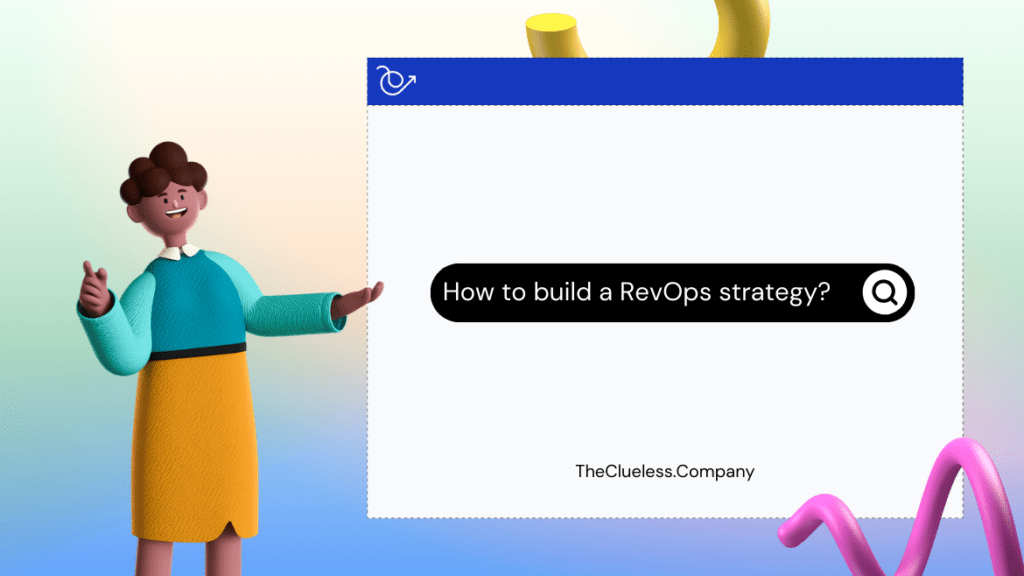We have written quite a lot on RevOps. But, then I wondered, have we ever shared about how RevOps strategy works? Or how is it built?
Well, in the evolving world of B2B SaaS, operational efficiency and seamless integration between sales, marketing, and customer service are paramount.
This is where Revenue Operations (RevOps) strategy comes into play. It provides a unified approach to managing all aspects of a business’s operations that impact revenue.
This blog post explores the essence of RevOps and its core elements that underpin a successful B2B SaaS business.
What is RevOps?
Let’s revise the concept of RevOps.
Revenue Operations, or RevOps, is a strategic approach to aligning sales, marketing, and customer service operations to drive growth and increase revenue.
Instead of operating in silos, these functions come together under the umbrella of RevOps to create a holistic, customer-centric view of the business processes.
Why Revenue Operations for B2B SaaS?
B2B SaaS businesses thrive on subscription models, making customer retention as important as customer acquisition.
With its integrated approach, revenue operations help businesses enhance the customer journey across all touchpoints, from initial contact to customer support, thereby improving customer experience, reducing churn, and increasing lifetime value.
Let’s focus on building a RevOps strategy for your brand.
What are the Core Elements of a RevOps Strategy?
1. Alignment
The first core element is alignment. RevOps aims to bring together the traditionally siloed departments of sales, marketing, and customer service to work toward a common goal.
This alignment ensures a smooth flow of data and a unified approach to delivering customer value.
2. Process Optimization
RevOps emphasizes the importance of optimizing processes to reduce friction and improve efficiency.
This involves identifying bottlenecks, eliminating redundancies, and leveraging automation where possible.
3. Technology Integration
An essential element of a successful RevOps strategy is the effective integration of technology.
Using a shared tech stack across teams not only improves data accessibility but also ensures everyone works with the same, real-time information, aiding decision-making and strategy formulation.
4. Data-Driven Decision Making
RevOps encourages making strategic decisions based on data.
The integration of teams and technology under revenue operation ensures a seamless flow of data, providing insights to help understand customer behavior, measure operational efficiency, and track key performance indicators (KPIs).
5. Customer Focus
At the heart of revenue operations is a customer-centric approach.
By aligning sales, marketing, and customer service, RevOps aims to enhance the customer journey, increase customer satisfaction, and ultimately drive revenue growth.
Tip: Read about the pillars that define revenue operations.
How to Build a Revenue Operations Strategy?
Crafting an effective RevOps strategy for your B2B SaaS business requires a comprehensive understanding of your organization, customers, and goals.
Here’s what goes into building a robust RevOps strategy:
1. Assess Current Operations
The first step to developing a RevOps strategy is assessing your current operational landscape.
This involves examining your sales, marketing, and customer service operations, identifying any silos that may exist, and understanding how data flows between these teams.
Run a SWOT analysis to identify where you currently stand.
2. Set Clear Objectives
Define what you aim to achieve with a RevOps strategy.
Your objectives could range from improving lead conversion rates, enhancing customer retention, to streamlining cross-departmental workflows.
These goals should align with your overall business objectives.
In fact, your objectives should be clear from day 0 of your brand operations.
3. Align Your Teams
This is the most challenging step.
Once you have a clear understanding of your current state and your objectives, start aligning your teams around common goals.
This may involve redefining roles and responsibilities, fostering cross-departmental collaboration, and setting shared KPIs.
4. Optimize Processes
Review and streamline your processes to reduce friction and improve efficiency.
Eliminate redundancies, identify opportunities for automation, and ensure workflows are clearly defined and understood by all team members.
5. Leverage Technology
Identify and deploy the right technology stack that can support your RevOps strategy.
The right tools can enable seamless collaboration, data sharing, and provide insights that help in making informed decisions.
Tip: Here are some tools TCC swears by for business ops.
6. Establish a Data-Driven Culture
Cultivate a culture of data-driven decision-making.
Invest in analytics tools that can provide insights into customer behavior, operational efficiency, and performance metrics.
This helps in identifying opportunities for improvement and tracking the success of your revenue operations strategy.
7. Focus on the Customer
Last, but definitely not least, ensure your RevOps strategy is customer-centric.
Understand your customer’s journey, identify touchpoints, and aim to provide a consistent, high-quality experience at each stage.
Companies with engaged employees outperform the competition by 147%.
Gallup
Believe me when I say it, I cannot emphasize enough on this.
Developing a RevOps strategy can be a complex task, but the benefits of increased efficiency, alignment, and revenue growth make it well worth the effort.
Remember, a successful RevOps strategy is iterative and should evolve with your business needs and market dynamics.
Conclusion
Understanding the RevOps strategy is crucial for B2B SaaS businesses seeking to improve operational efficiency and drive revenue growth.
With its core elements of alignment, process optimization, technology integration, data-driven decision-making, and customer focus, revenue operations offer a comprehensive approach to manage all revenue-related operations.
As B2B SaaS businesses continue to evolve, so too will the strategies that guide their growth, with RevOps standing at the forefront of this exciting frontier.

1 thought on “RevOps 101: A Practical Approach to RevOps Strategy in B2B SaaS”
Comments are closed.